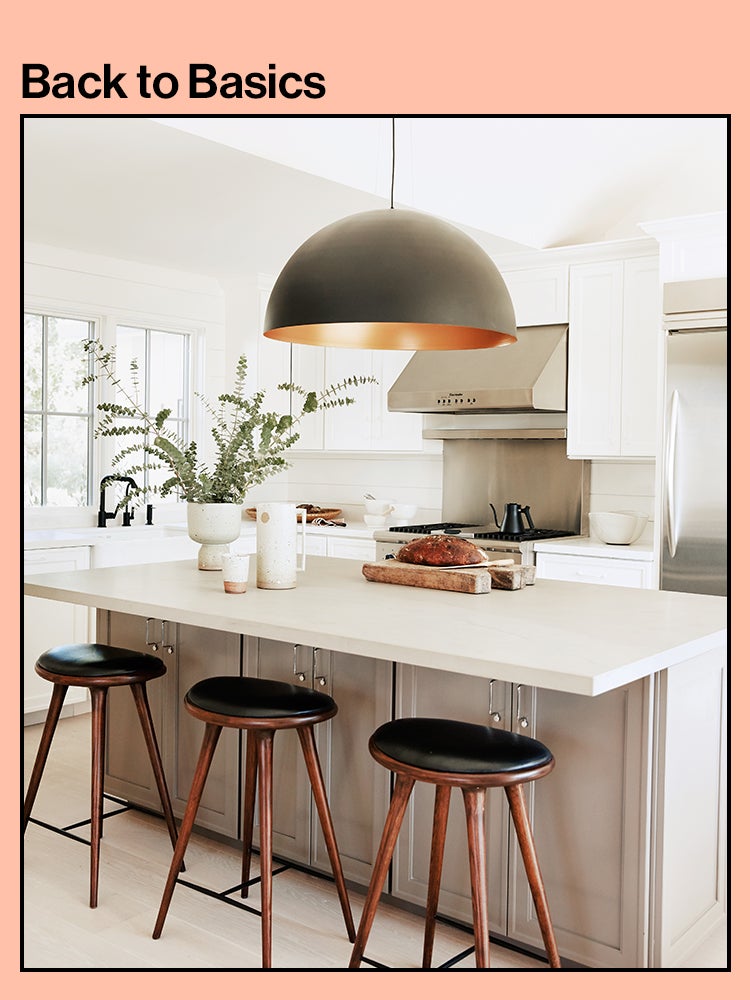How to Clean Laminate Floors So They Stay Nice-Looking for Decades
It’s not the same approach as with hardwood.
Published Dec 30, 2021 2:48 AM
We may earn revenue from the products available on this page and participate in affiliate programs.
The good news: Laminate beats hardwood in the durable flooring department, specifically in terms of its likelihood to fade, stain, or get damaged by moisture, says Dr. Greg Van Buskirk, cofounder and chief science officer at Sensitive Home, a nontoxic cleaning supplies company. The bad news: Laminate floors aren’t easy to repair. Why? Unlike timber, the synthetic material cannot be sanded and refinished, so there are no do-overs that don’t come with a hefty price tag. Which means knowing how to clean laminate floors is only part of it—you also need to understand how to maintain them.
Many laminate floors have manufacturer warranties between 10 and 25 years, Van Buskirk points out. “While it is probably impossible to have your floors look brand-new throughout that entire period, by following these practices, your floors will bring you years of pride and pleasure,” he says.
What Is Laminate Flooring, Really?
Laminate flooring is a synthetic product designed to imitate the appearance of real wood. The material has a core of melamine resin and fiberboard material (like many cabinets) and a top layer imprinted (and sometimes textured) with a pattern that resembles wood grain. If you aren’t sure whether you have laminate or hardwood floors, lift a heating vent and peek at a plank from the side to see if it’s solid lumber or includes the layers above.
Common Mistakes to Avoid When Cleaning Laminate Floors
Skipping a Tidy-Up Between (Big) Cleanings
Regularly dry-dust or vacuum your laminate floors between moppings to prevent a buildup of dirt and debris, which is not only gross (hello, allergens!) but can harm the floor’s surface. “Even the toughest factory treatment doesn’t stand a chance against sand or small gravel being scuffed into it,” says Van Buskirk.
Reaching for Abrasive Cleaning Supplies
Be gentle with your laminate floors. Avoid harsh cleaners, steel wool, and scouring powder, since they could potentially damage and scratch the finish. Instead use a gentle cleaner with a neutral pH paired with a microfiber dust mop. (A neutral pH solution won’t damage floors like a basic or acidic one might, and it’s less likely to irritate your skin.)
Using Too Much Cleaning Solution
Laminate floors and moisture do not mix. Van Buskirk warns that using an excessive cleaning solution or letting a spill sit for more than a few minutes could lead to the planks warping or swelling.
How to Clean Laminate Floors
The Supplies
- Neutral pH floor cleaner
- Microfiber dust mop or vacuum with soft-head attachment
- Microfiber cloths
Step 1: Clear Floors of Furniture
As much as possible, move your furniture and rugs off of the laminate floors (or at least to one side of the room). Furniture pads are your friend, as are actual friends or family willing to lend you a pair of hands.
Step 2: Vacuum, Dust, and Dry-Mop
Before applying any product, do a solid sweep with a microfiber dust mop to clear away dirt, dust, and all that hair (no pointing fingers) that inevitably makes its way to the ground. You could also vacuum with a soft-head attachment, as long as you inspect the bristles first to make sure nothing will scratch the surface.
Step 3: Test Your Cleaning Solution
Spritz a small, inconspicuous area of your floor with a neutral pH cleaner to make sure it doesn’t harm the finish. Van Buskirk notes that you want one that’s free of known irritants, harsh chemicals, and toxic residues, which can build up over time—yuck.
Step 4: Spray and Mop, Spray and Mop
Working in small sections, sparingly spray the cleaner directly on the floor, then immediately wipe it clean with a microfiber mop or cloth so moisture doesn’t accumulate. Repeat the process until the entire expanse is sparkling clean.
Step 5: Dry, and Dry Thoroughly
Let the floors continue to dry completely before walking on them, which won’t take long—a couple of minutes max. (If more, you’re using too much cleaner.) And perhaps adopt a shoes-off policy; you wouldn’t want muddy footprints to ruin your hard work.
